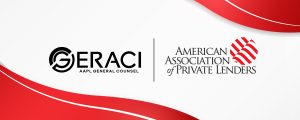When talking about collateralization in real estate, the term defines the act of using an asset as collateral to secure a loan. The owner of the real property agrees to convey an equitable title or a security interest in the property, held by the lender as collateral against a loan.
Collateralization commonly occurs with the execution of a promissory note, along with a mortgage or deed of trust that is recorded with the county. This process places a lien against the property’s title and must be satisfied, or paid, before the lien can be released.
Lenders hold the mortgage or deed of trust until the loan principal plus interest is repaid in full. If a borrower does not pay the loan promptly, the lienholder can initiate foreclosure proceedings against the property. Liens are recorded in a “first in, first out” manner. This order means that the first lien on real property is the “primary lien” and is the first one that must be satisfied. Subsequent liens can fall in second or third position, and are known as “junior” liens.
When a borrower applies for a business purpose loan that requires a personal guarantee, they may offer to place a second lien on a property that he or she owns. If there is not enough equity in that property to satisfy the lender’s underwriting criteria, they may offer a lien on multiple pieces of property to meet the lender’s security requirements. This process of encumbering two or more pieces of real property as security for one loan is known as “cross-collateralization.”
When seeking to cross-collateralize a loan, a lender would have the borrower sign one promissory note and one deed of trust. However, the deed of trust would be recorded against both properties. The documents would list both property descriptions, and escrow and title would refer to both properties. A subsequent title search would reflect the existence of cross-recorded instruments against all of the properties cross-collateralized.
Underwriting these types of cross-collateralized loans can be complicated, as a mortgage lender, broker, or investor would have to research whether other liens are in place on additional properties before being confident that their lien carries enough equity value. Lenders will sometimes place a clause in their mortgage documents such as “due on further encumbrance,” to acknowledge that if a borrower attempts to add an additional lien on the property, the lender has the right to call the loan due and payable. While there are federal and state laws on the books that prevent lenders from enforcing this clause on primary residences and 1-4 single family properties, other commercial or investment properties have no such restriction.
Other documentation issues that arise with cross-collateralized loans is the lender providing a partial release provision and a cross-default clause in the loan documents. A partial release clause can be added to the loan documents to stipulate that a lender will release or re-convey the lien on a property if it is sold, provided that a certain percentage of the proceeds go to the lender to pay down the secured loan. Depending on the size of the loan, a lender may require that all or a portion of the proceeds go towards paying down the debt.
A cross-default provision is typically a written addendum to loan documents which allows the lender to place the borrower into default if they fail to make payments on any loans attached to the secured properties. A cross-default provision protects the lender’s interest in the property by ensuring they will be notified if a borrower fails to meet any of his or her other financial obligations related to the collateral. This provision could also be attached to affirmative covenants, such as those which require the borrower to maintain property insurance, provide for maintenance on the building, or restrict its use.
Cross-collateralization is a tricky subject, and for a mortgage broker or lender to undertake this type of strategy, they must take into consideration state and federal regulations, as well as be cognizant of all the encumbrances that may affect the collateral.






